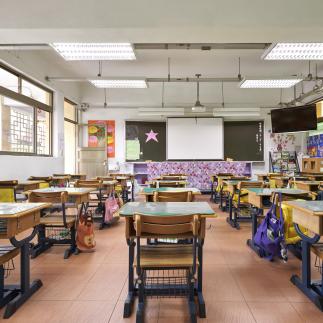Disparities in Unexcused Absences Across California Schools

Summary
Finding effective ways to improve school attendance is more important than ever given the dramatic increases in chronic absence nationwide and in California. This report presents a compelling case for using data about unexcused absences to advance a more preventive, problem-solving, and equitable response to poor attendance.
When an absence is labeled unexcused, it affects how a student and their family are treated. Although students face no negative consequences for excused absences, they can be denied credit for missed work, excluded from extracurricular activities, and eventually taken to court and fined for unexcused absences. As absences accumulate, responses generally become more punitive. Yet punitive responses are unlikely to improve attendance when absences occur for reasons beyond the control of the student and their family. Rather, overuse of the unexcused-absence label could undermine efforts to partner with students and families to improve attendance.
Our analyses of statewide data show:
- During the 3 school years examined in this report (2017–18, 2018–19, and 2021–22), the percentage of absences labeled unexcused held constant at around 38 percent in California. Schools with higher percentages of unexcused absences typically had lower attendance rates while schools with lower percentages of unexcused absences had higher levels of attendance.
- Socioeconomically disadvantaged students are much more likely to have their absences labeled unexcused. This is also true for Black, Native American, Latinx, and Pacific Islander students relative to White, Asian American, and Filipino students. Black students experience the largest disparity. These disparities cannot be fully explained by poverty since they remained across differences in socioeconomic status.
- Although English learners and students with disabilities were more likely to be chronically absent, disparities in unexcused absences for these groups were relatively small compared to disparities across socioeconomic, racial, and ethnic groups.
- Preliminary data suggest that schools serving more socioeconomically disadvantaged students communicate more punitive approaches. More research is needed to understand why. The good news is some schools are “bright spots,” with high attendance rates, less frequent use of the unexcused-absence label, and fewer disparities in labeling absences as unexcused.
The report concludes with recommendations for how stakeholders can use data to detect and address disparities in the labeling of unexcused absences and advance more equitable opportunities to learn.
The research and writing of this report was undertaken with Joshua Childs, University of Texas at Austin; Cecelia Leong, Vice President of Programs, Attendance Works; and Janet E. Rosenbaum, SUNY Downstate Health Sciences University, Brooklyn.
McNeely, C., Chang, H., & Gee, K. (2023, March). Disparities in unexcused absences across California schools [Report]. Policy Analysis for California Education. https://edpolicyinca.org/publications/disparities-unexcused-absences-across-california-schools



